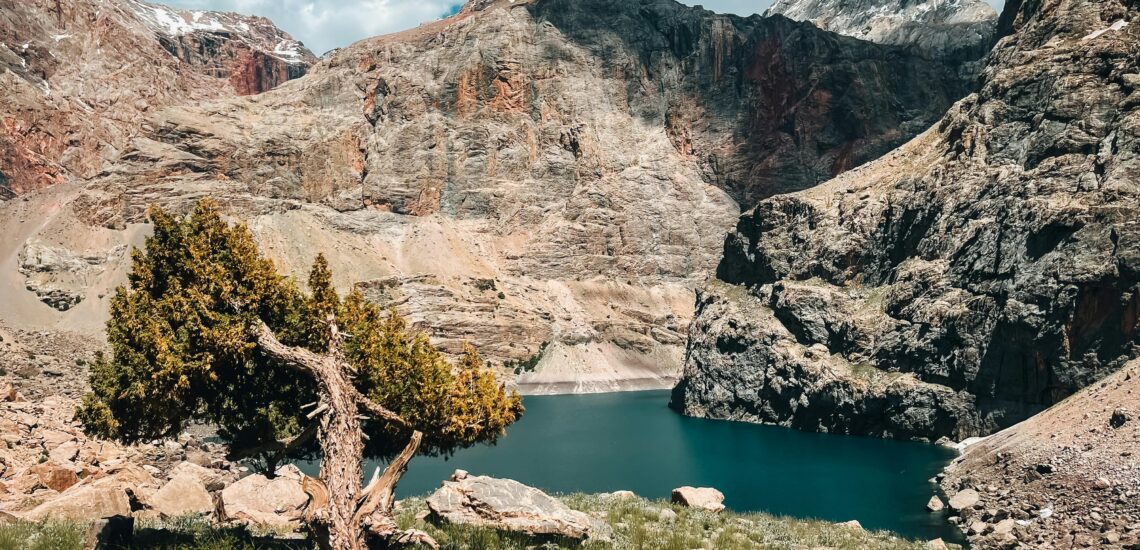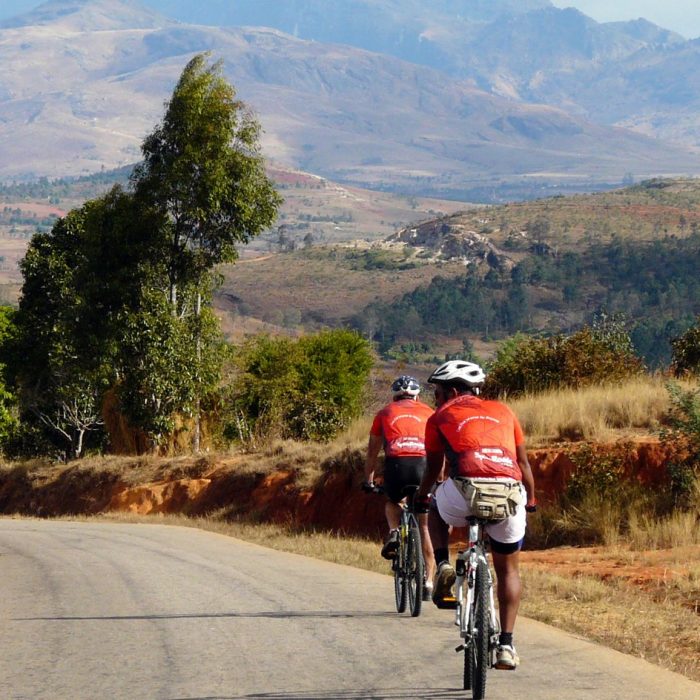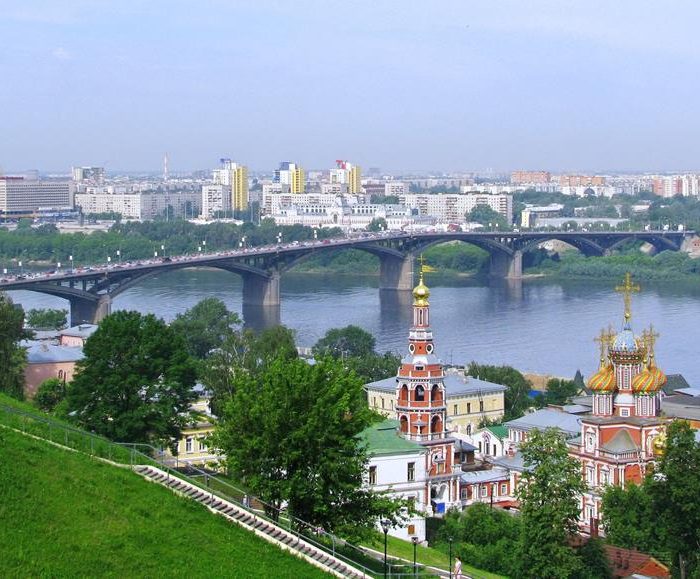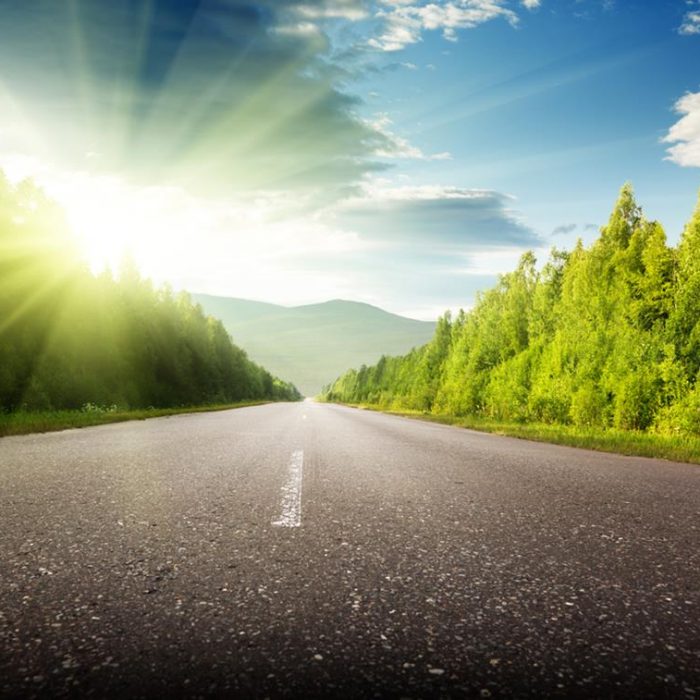With over 90% of its land covered by mountains, Tajikistan is one of the most rugged and remote destinations in Central Asia. From the high-altitude Pamir Plateau to the sharp peaks of the Fann Mountains, it offers a landscape built for exploration — and a culture shaped by isolation, resilience, and Silk Road history.
Travel here means trekking through remote valleys, crossing high mountain passes, soaking in wild hot springs, and staying with local families in Pamiri villages.
Best Cities to Visit
Dushanbe
Tajikistan’s capital, Dushanbe, is a relaxed and leafy city — easy to navigate and ideal for a soft landing or a cultural stop between mountain routes. Its wide boulevards, parks, and Soviet-era architecture blend with growing modern influences.
Key places to visit include:
- Rudaki Park – Central green space with fountains, flowers, and views of the Presidential Palace.
- National Museum of Tajikistan – Covers natural history, archaeology, and national identity in a well-curated space.
- Ismaili Centre – A striking example of modern Islamic design, open to visitors when not in use for services.
- Mehrgon Market – The city’s busiest bazaar for fresh produce, dried fruit, spices, and local life in motion.
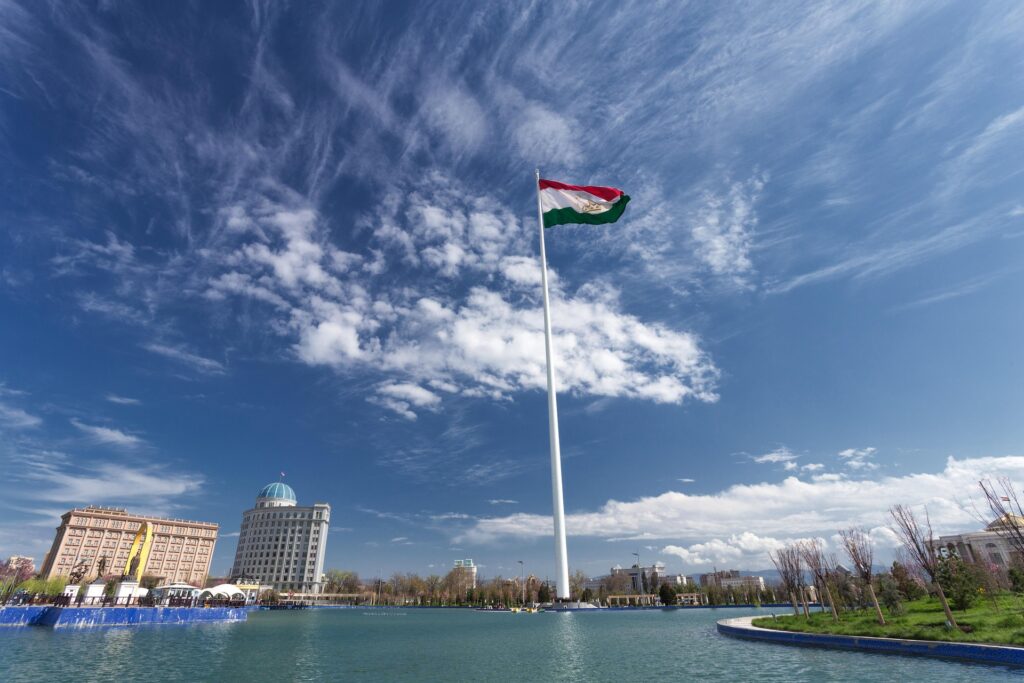
Khujand
Set along the Syr Darya River in northern Tajikistan, Khujand is one of the region’s most historic cities – founded over 2,500 years ago and once part of Alexander the Great’s empire. Today, it blends ancient legacy with everyday life, offering travelers a mix of cultural landmarks, bustling bazaars, and laid-back charm.
Explore the restored Khujand Citadel, home to a regional history museum, and visit the Sheikh Muslihiddin Mausoleum, a peaceful religious site in the city center. Just steps away, the Green Bazaar hums with activity – one of the best places in Tajikistan to taste fresh fruit, shop for spices, or simply watch local life unfold.
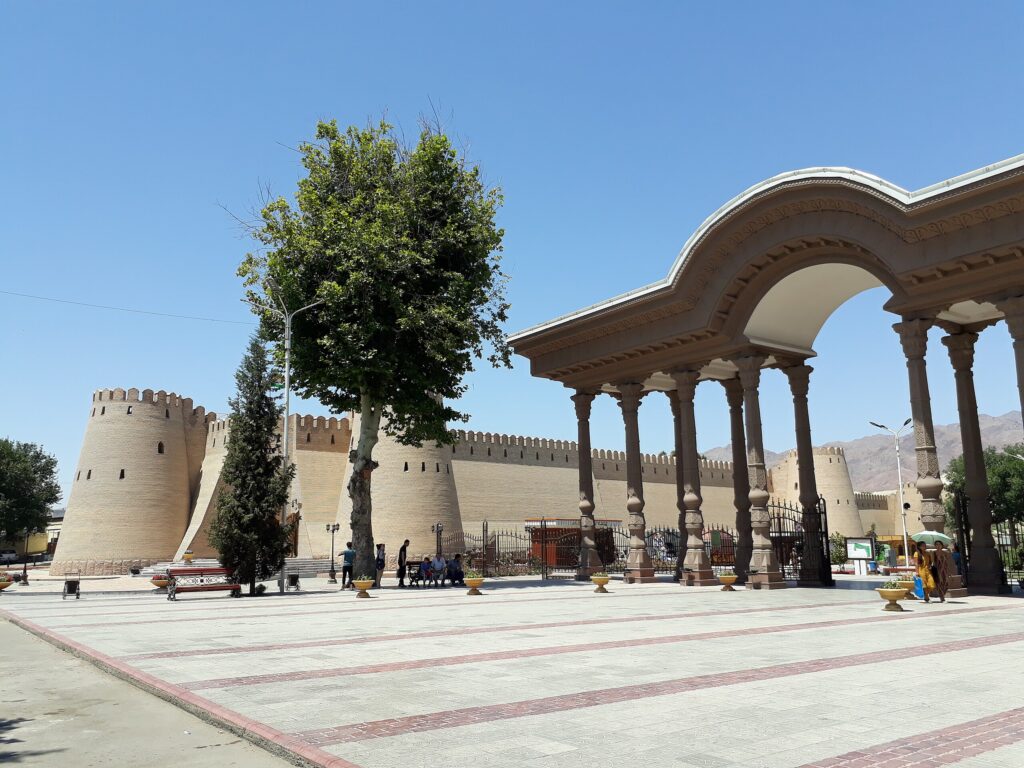
Panjakent
Panjakent is a small, walkable town in western Tajikistan that serves as the main launch point for treks into the Fann Mountains and day trips to the Seven Lakes (Haft Kul). It’s a relaxed place with basic amenities, local guesthouses, and a growing interest in eco-tourism.
Just outside town lie the ruins of ancient Panjakent – once a thriving Sogdian city dating back to the 5th century. You can still see the layout of streets, temples, and even fragments of murals from before the Islamic period. There’s also a small museum with artifacts and historical context.
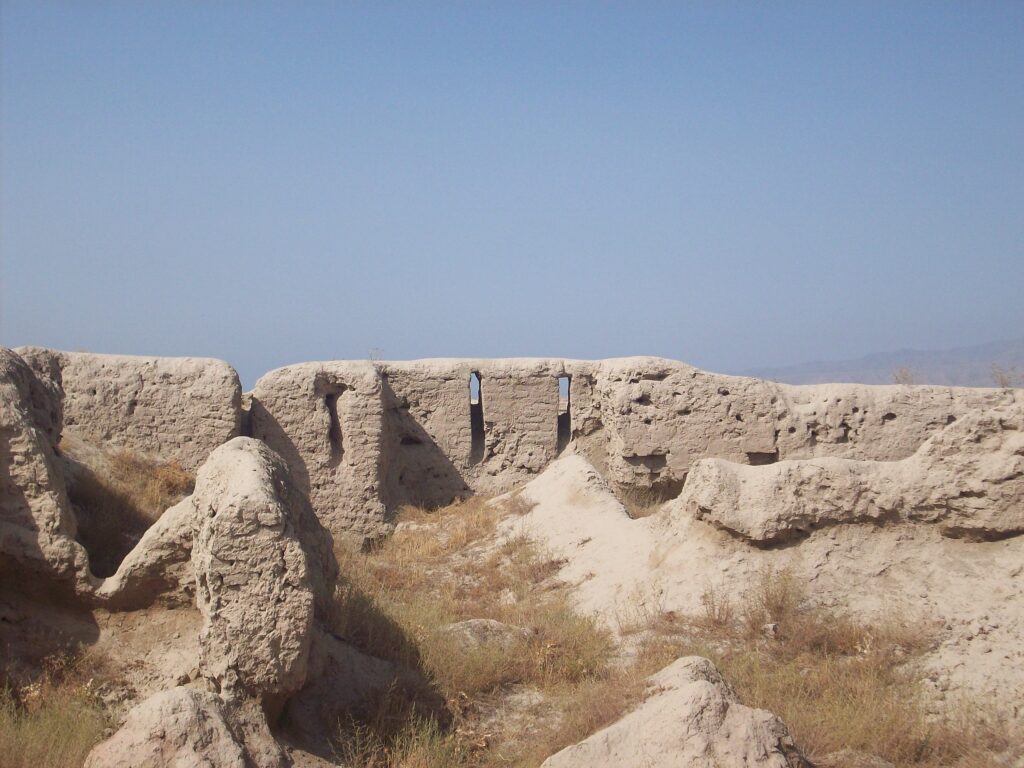
Khorog
Tucked between steep mountains on the Gunt River, Khorog is the informal capital of the Pamir region and a key stop along the Pamir Highway (M41). Despite its remote location, the town has a peaceful vibe, with small cafés, guesthouses, and a university-town feel thanks to the local campus of the University of Central Asia.
Travelers often pause here to rest, resupply, or acclimatize before heading deeper into the high-altitude Pamirs. Highlights include the Khorog Botanical Garden, one of the highest in the world, and riverside parks that offer a calm break from the road. Several side valleys, including routes toward the Afghan border and Wakhan Corridor, begin nearby.
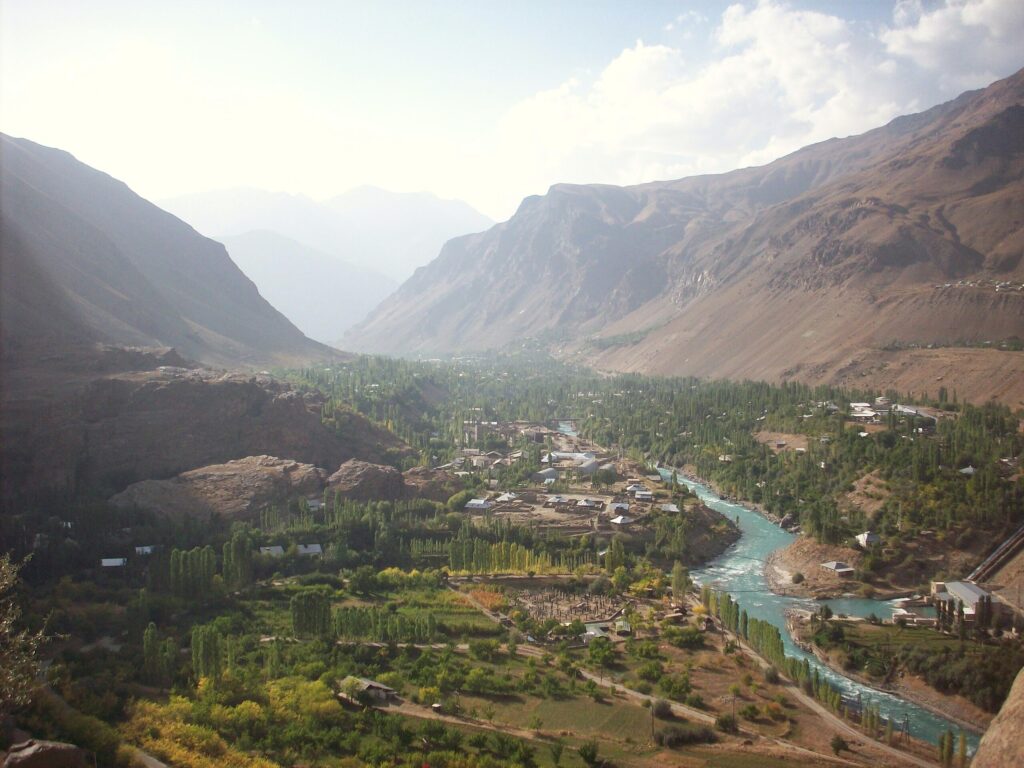
Istaravshan
Located in northern Tajikistan, Istaravshan is one of the country’s oldest cities – known for its preserved Islamic architecture, craft traditions, and bustling bazaar culture. It’s often overlooked by travelers, but offers a rewarding stop for those interested in history and handmade goods.
Key sites include the Hazrati Shoh Mosque, the reconstructed Mug Teppe citadel, and a busy central bazaar where locals sell fresh produce, textiles, and traditional crafts. Istaravshan is especially known for its blacksmiths and knife-makers, whose hand-forged blades are still made using centuries-old techniques.
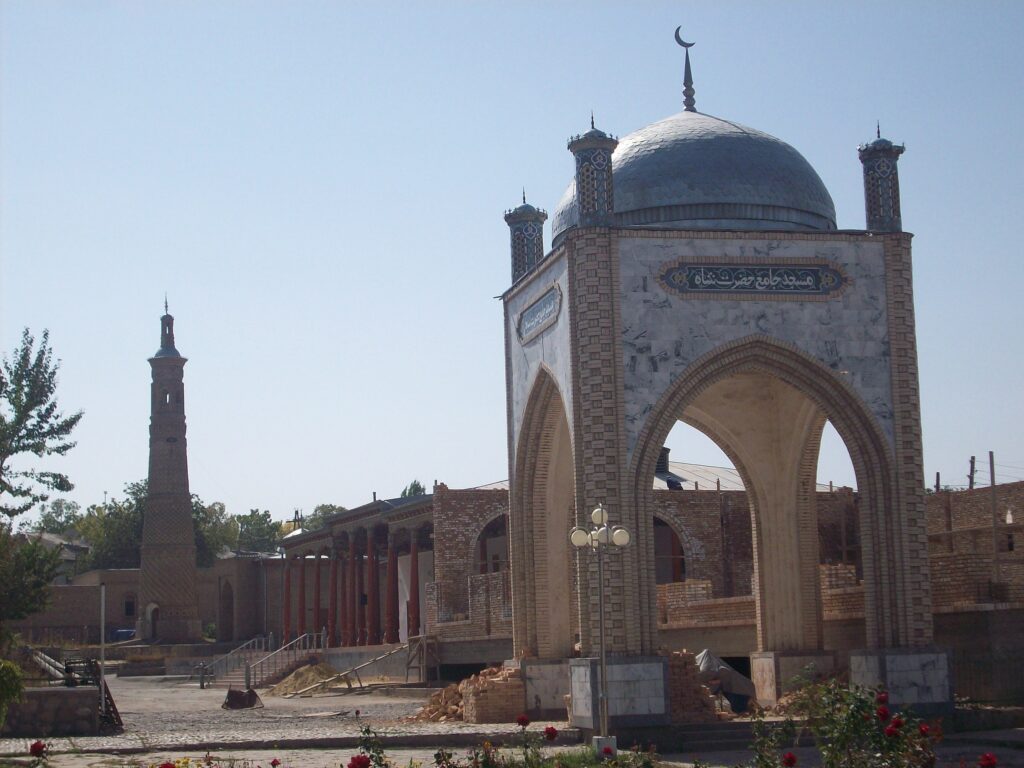
Best Natural Wonders
Fann Mountains
Located in western Tajikistan near the Uzbek border, the Fann Mountains offer some of the most accessible high-altitude trekking in the country. With jagged peaks, turquoise glacial lakes, and green valleys, the region is ideal for multi-day hikes and summer adventure.
Popular routes include treks to Alaudin Lake, the Kulikalon Lakes, and Iskanderkul. Trails are mostly unmarked but well-known among local guides. Access is best from Artuch base camp or the town of Panjakent, with guesthouses and homestays available in nearby villages.
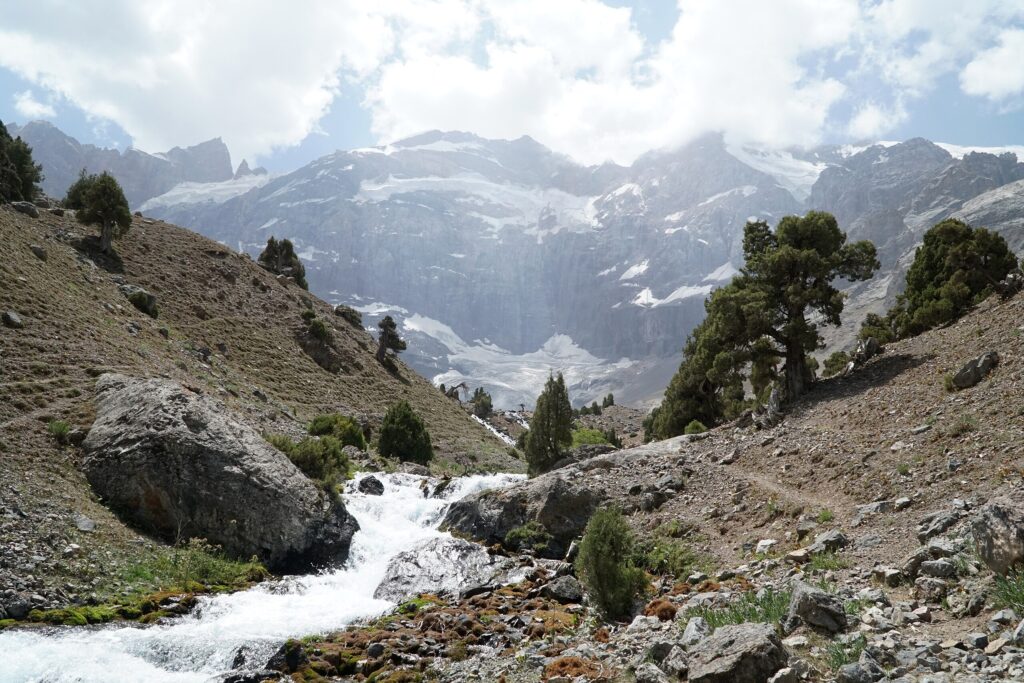
Iskanderkul Lake
Iskanderkul is a high-altitude glacial lake set at 2,195 meters, surrounded by steep cliffs and craggy peaks in the northern Fann Mountains. Named after Alexander the Great (Iskander), who is said to have passed through the area, the lake is one of Tajikistan’s most iconic natural landmarks. It’s reachable by car in about 3–4 hours from Dushanbe, making it a popular weekend or overnight trip. The turquoise water, dramatic mountain backdrop, and cool mountain air make it ideal for photography, relaxing walks, or just escaping the summer heat.
Around the lake, you’ll find simple cottages, homestays, and camping spots. A short hike leads to Fan Niagara, a 40-meter waterfall crashing through a narrow gorge – one of the most powerful in the country.
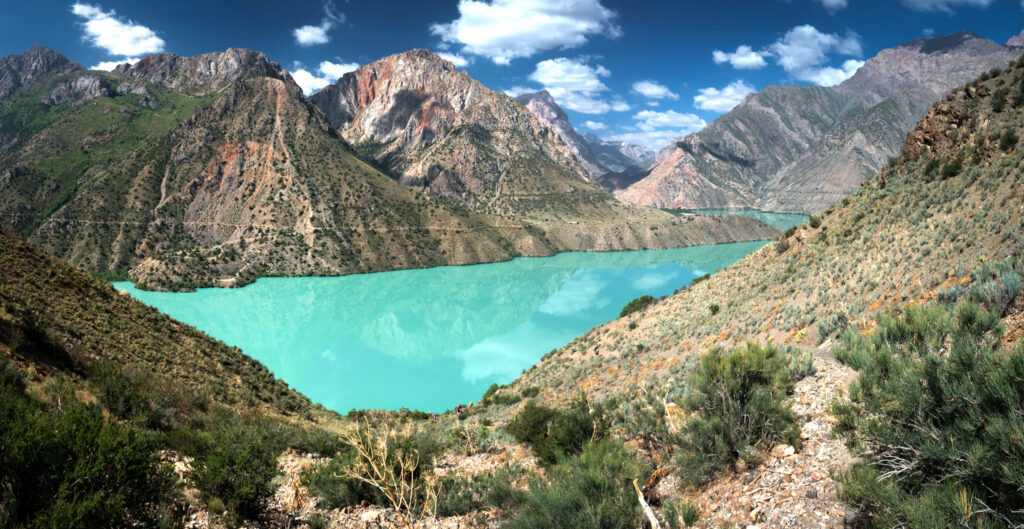
Seven Lakes (Haft Kul)
Located in the Zeravshan Valley near Panjakent, the Seven Lakes, or Haft Kul, are a chain of vibrant alpine lakes, each varying in color, size, and local legend. The lakes range from deep green to bright blue, with surrounding cliffs and forested slopes that shift with the light. They’re named Mijgon, Soya, Hushyor, Nophin, Khurdak, Marguzor, and Hazorchashma, and are spread along a narrow mountain valley at altitudes between 1,600 and 2,400 meters.
The route to the lakes begins on a rough but scenic unpaved mountain road, best navigated with a local driver or 4WD vehicle. It’s possible to drive to the sixth or seventh lake, stopping for short walks, photos, or even a swim in summer. More adventurous travelers can plan day hikes or overnight treks between villages along the route, staying in homestays and experiencing the quiet rhythm of mountain life.
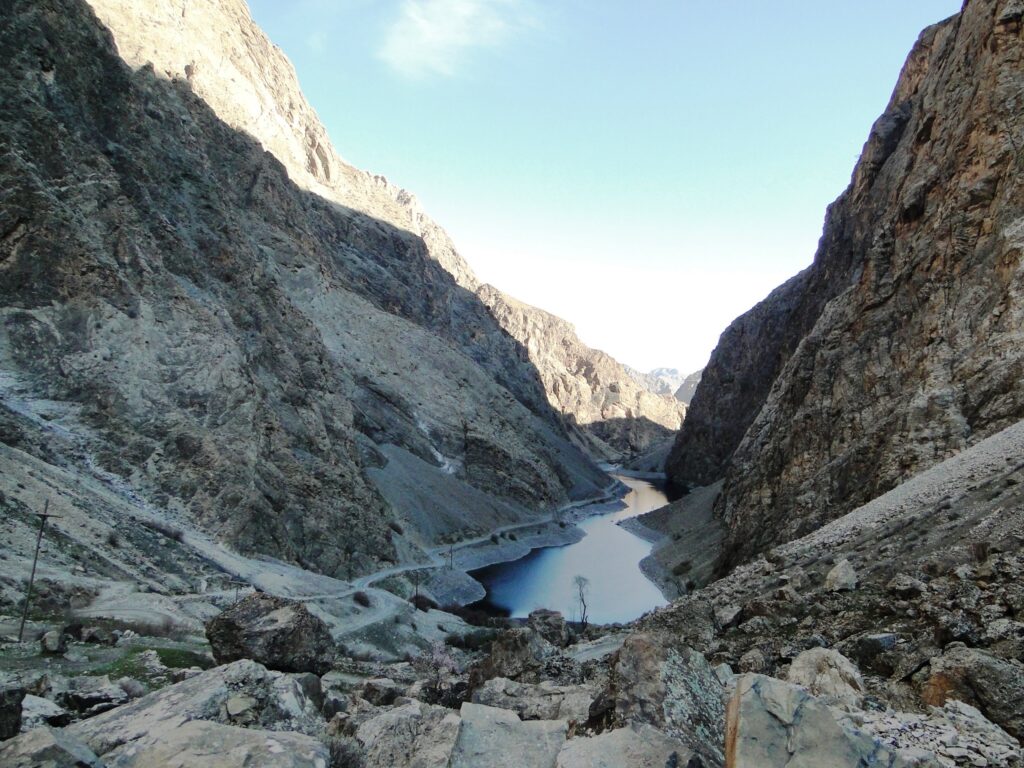
Pamir Mountains
Covering much of southeastern Tajikistan, the Pamir Mountains are among the highest and most remote ranges in the world. Known as the “Roof of the World”, this region is defined by vast plateaus, snow-capped peaks, and villages that seem frozen in time. Life here is shaped by altitude, tradition, and isolation – making it one of the most unique cultural and geographic regions in Central Asia.
The Pamir Highway (M41) is the main route through the region, stretching from Dushanbe to Osh via Khorog, Murghab, and sometimes the Wakhan Valley. It’s one of the world’s highest and most spectacular road trips, passing over Ak-Baital Pass (4,655 m), through Bartang’s dramatic canyons, and alongside the Afghan border in Wakhan. Whether traveling by shared 4WD, private tour, or bicycle, the journey offers raw landscapes, Pamiri hospitality, and an unforgettable sense of scale.
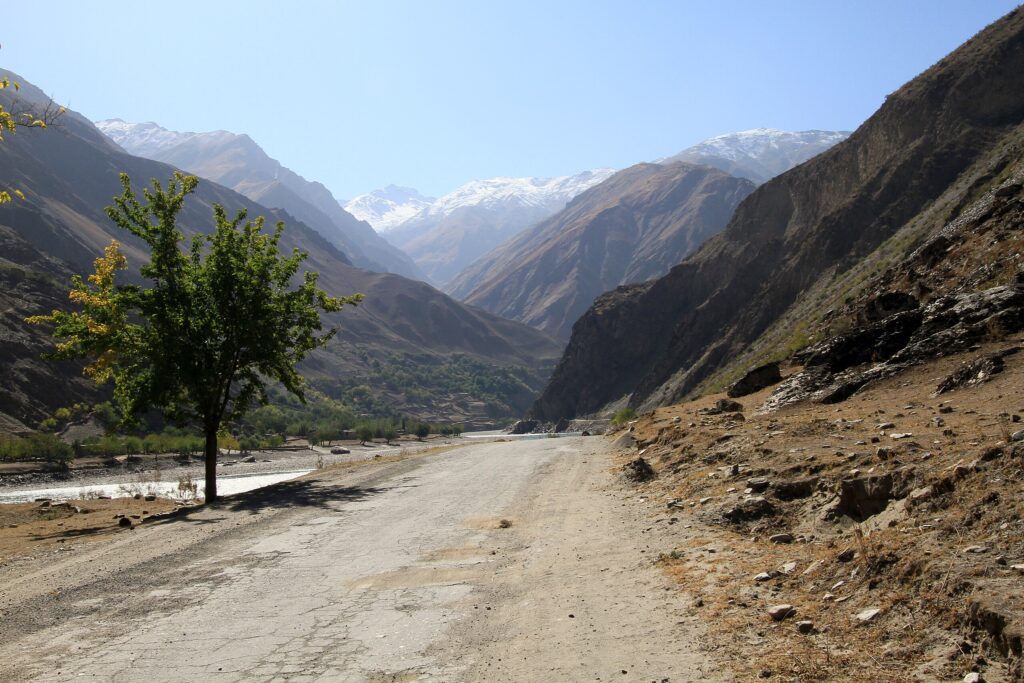
Bibi Fatima Hot Springs
The Bibi Fatima hot springs are tucked into a cave-like opening in the cliffs. Rich in minerals and believed by locals to enhance fertility and health, the springs are separated by gender and maintained by local attendants. With hot water, high views, and total quiet, it’s one of the most unusual and memorable bathing experiences in Central Asia.
Hidden Gems of Tajikistan
Wakhan Valley
Stretching along the Panj River, the Wakhan Valley forms a narrow, high-altitude corridor between Tajikistan and Afghanistan. This isolated region has seen thousands of years of movement and belief – from Zoroastrians and Buddhists to Islamic scholars and Silk Road caravans. Today, you can explore petroglyphs, shrines, and ancient fortresses like Yamchun and Khaakha, scattered across stark but beautiful terrain.
The road is rough but spectacular, passing through small Pamiri villages, terraced fields, and natural hot springs like Bibi Fatima. You’ll find homestays in nearly every settlement, where locals offer simple meals and heartfelt hospitality. Travel is slow, but the views of the Hindu Kush, cultural depth, and complete lack of crowds make it one of the most rewarding routes in Central Asia.
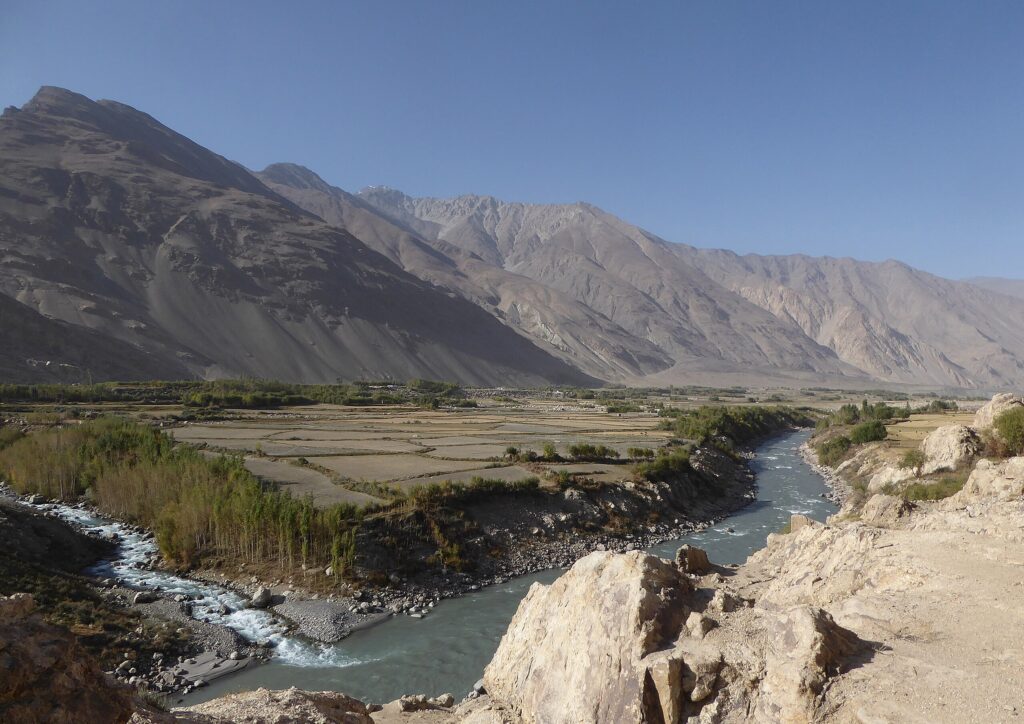
Murghab
Sitting at over 3,600 meters, Murghab is the highest town in Tajikistan and the main hub in the eastern Pamirs. Surrounded by barren mountains and wind-swept plains, it feels more like a frontier outpost than a traditional settlement. The landscape is stark and Mars-like, with minimal vegetation, intense sunlight, and extreme temperature shifts. Despite this, Murghab functions as a key stop for travelers crossing the Pamir Highway – especially for those heading to or from Karakul Lake, Ak-Baital Pass, or the Chinese border.
Accommodation ranges from basic guesthouses to yurt stays, and while amenities are limited, the town offers fuel, supplies, and transport options deeper into the region. The clear skies and total lack of light pollution make it a great place for stargazing, with the Milky Way often visible overhead. Murghab also hosts a small but active bazaar, and its mixed Kyrgyz and Pamiri population adds cultural variety to the region.
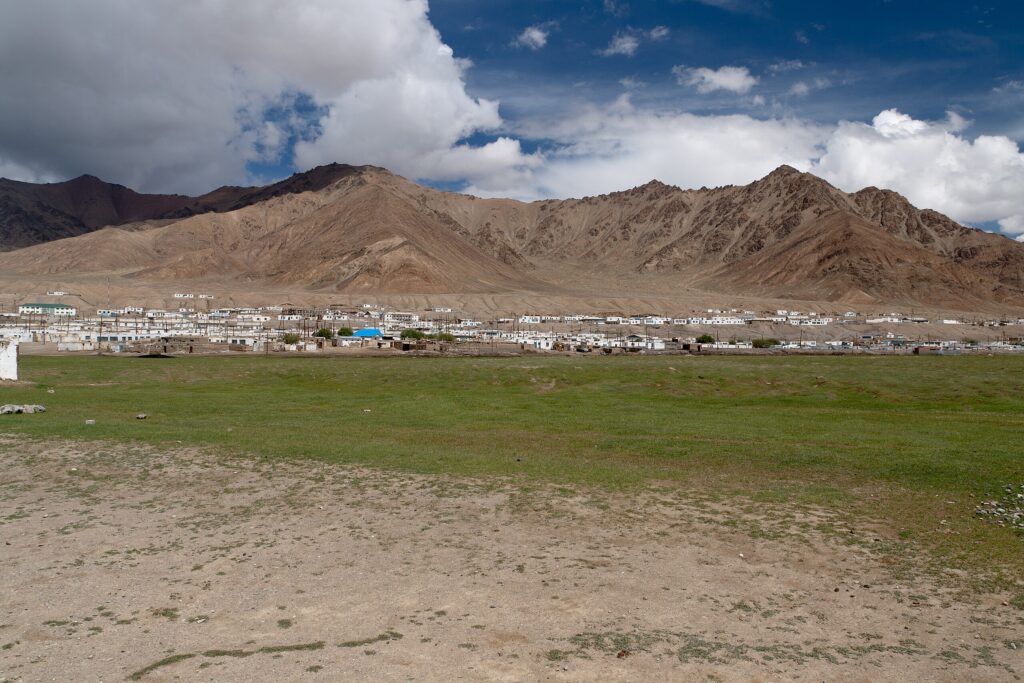
Jizeu Village
Hidden deep in the Bartang Valley, Jizeu is a small, car-free village known for its silence, simplicity, and natural beauty. It’s reachable only by crossing a pedestrian suspension bridge over the Bartang River, followed by a 1–1.5 hour uphill hike through pine groves and narrow paths. Once there, you’ll find a cluster of stone houses and homestays tucked beside a peaceful mountain lake, surrounded by green hills and snow-capped peaks.
Travelers often come to Jizeu for an overnight stay, resting between longer treks or taking a break from the rigors of Pamir travel. The pace is slow: home-cooked meals, quiet trails, and time to relax without cell signal or distractions. It’s also a great spot for photography and birdwatching, especially at sunrise and sunset.
Bulunkul & Yashilkul Lakes
Located deep in the eastern Pamirs, Bulunkul and Yashilkul are two of Tajikistan’s most isolated and visually striking lakes. Surrounded by bare mountains and high-altitude desert, the area sits at over 3,700 meters, with biting winds, cold nights, and an almost otherworldly stillness. The lakes themselves are vast and open – Yashilkul with its deep blue waters, Bulunkul often frozen in winter and surrounded by marshy ground where yaks graze freely.
The tiny village of Bulunkul has a few family-run homestays, where visitors can sleep in simple rooms or yurts, eat home-cooked Pamiri food, and even help with daily tasks like milking animals or baking bread.
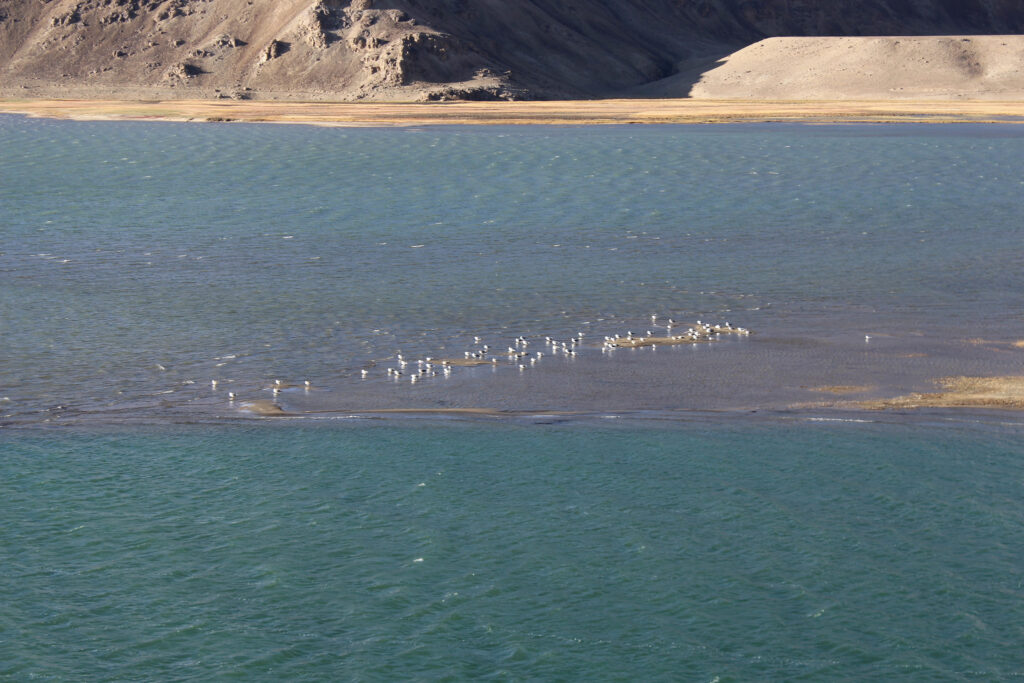
Rasht Valley
Tucked in northeastern Tajikistan, the Rasht Valley is a lesser-known alternative to the Pamirs — lower in altitude but rich in scenery, culture, and agricultural life. The valley is defined by rolling green hills, forested slopes, and fast-moving rivers, with small villages scattered along winding roads. It’s a place where you’ll see more apple orchards and wheat fields than yaks, and where traditional life continues at a slower, quieter pace.
While infrastructure is basic, the Rasht region offers excellent opportunities for off-the-radar trekking, homestays, and local interaction — without the altitude extremes or remoteness of the Pamirs. It’s also historically significant: the valley played key roles in both Soviet-era conflicts and Tajikistan’s civil war, adding depth to the region’s story.
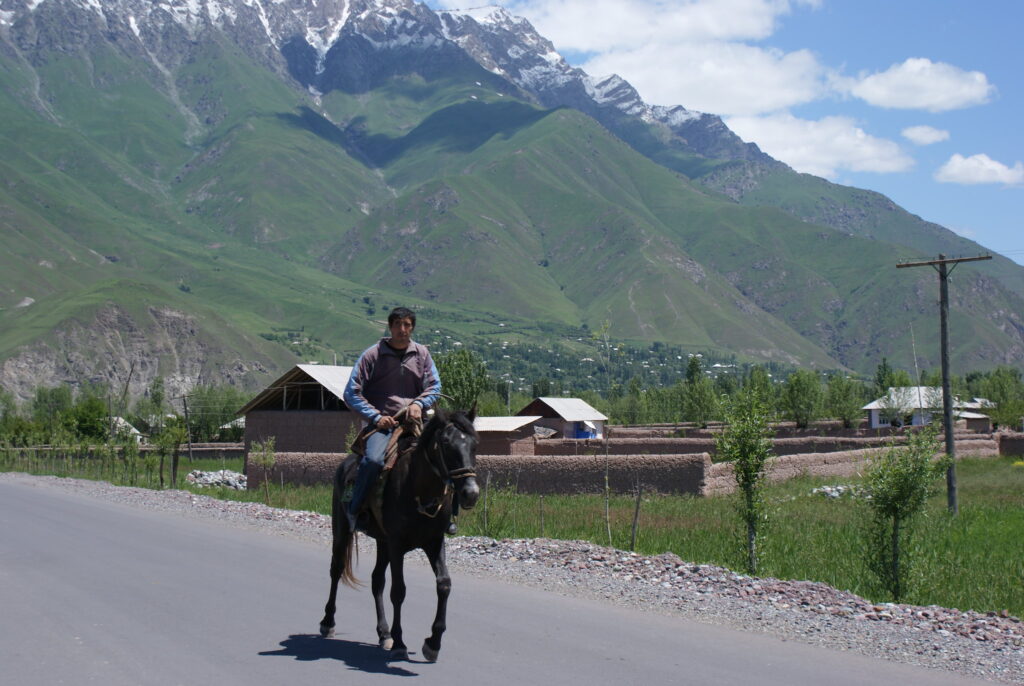
Best Cultural & Historical Landmarks
Hisor Fortress
Located just 30 km west of Dushanbe, the Hisor Fortress is one of Tajikistan’s most accessible and well-known historical landmarks. Once a key military and trade post along ancient routes to the west, the current structure is largely reconstructed, but its massive gateway and setting above the valley still offer a sense of scale and importance.
The complex includes two preserved madrassahs, a small museum, and a traditional-style teahouse, making it a good half-day outing from the capital. The surrounding hills provide nice views over the Hisor Valley, especially at sunset. It’s also a convenient introduction to Tajikistan’s history before heading deeper into the mountains.
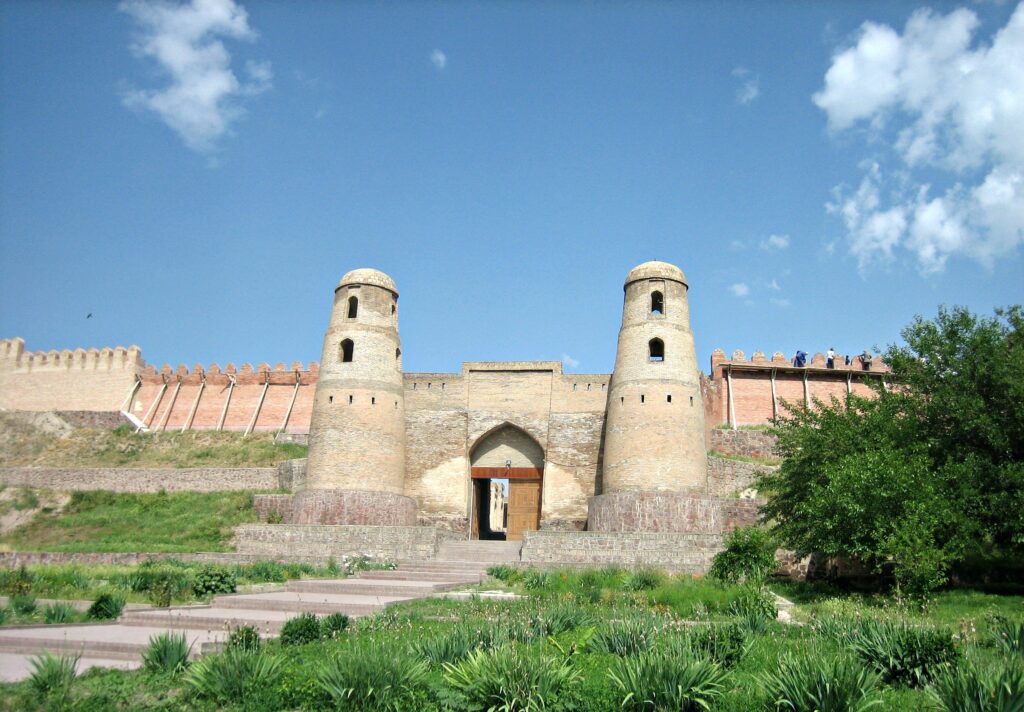
Panjakent Ruins
Just outside modern Panjakent, the ruins of ancient Panjakent reveal the remains of a once-thriving Sogdian city that flourished between the 5th and 8th centuries. Excavations have uncovered residential quarters, temples, and fragments of vibrant wall paintings that depict daily life, mythology, and ceremonies – offering a rare window into pre-Islamic Central Asian culture.
While much of the site is low-lying and partially reconstructed, it’s easy to explore independently or with a local guide. A small on-site museum displays original frescoes, pottery, and artifacts. The ruins are just a short drive or walk from the town center, making them an easy and meaningful stop before or after a trek into the Fann Mountains.
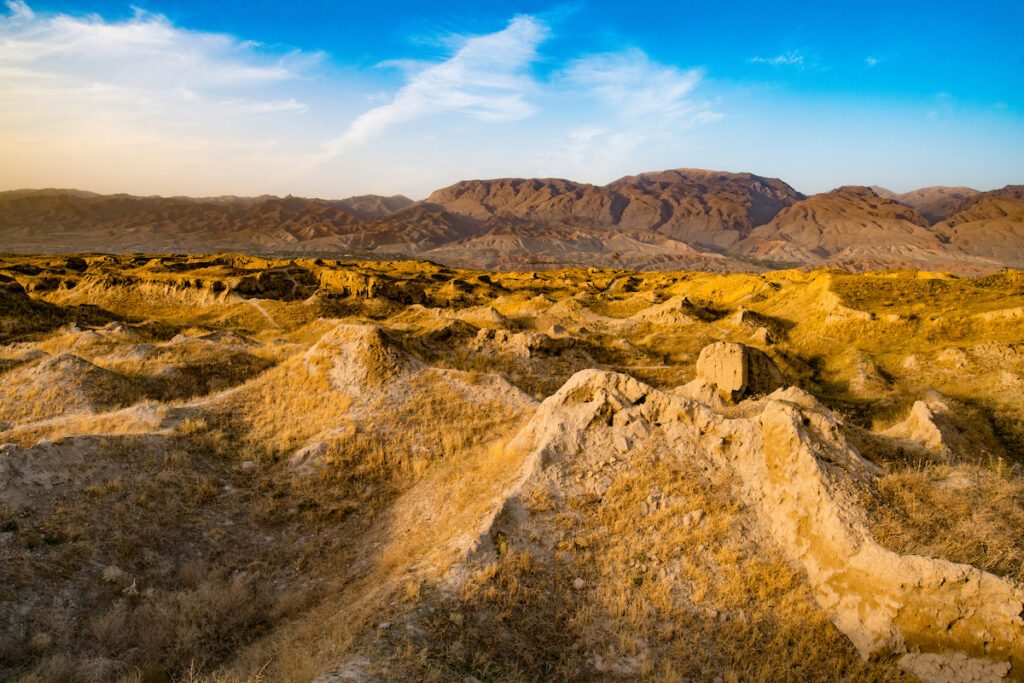
Yamchun Fortress
Perched on a rocky ridge high above the Wakhan Valley, Yamchun Fortress is one of Tajikistan’s most striking and photogenic archaeological sites. Dating back to the 3rd century BCE, it once guarded strategic trade routes along the ancient Silk Road. Though partially in ruins, its stone towers and defensive walls still trace the original layout, offering insight into early military architecture in the region.
The real highlight is the view: from the fortress, you get sweeping panoramas of the Panj River and the Hindu Kush mountains across the border in Afghanistan. It’s a short drive from local villages and often combined with a visit to the nearby Bibi Fatima hot springs. There are no entry fees or fences – you’re free to walk the site and explore at your own pace.
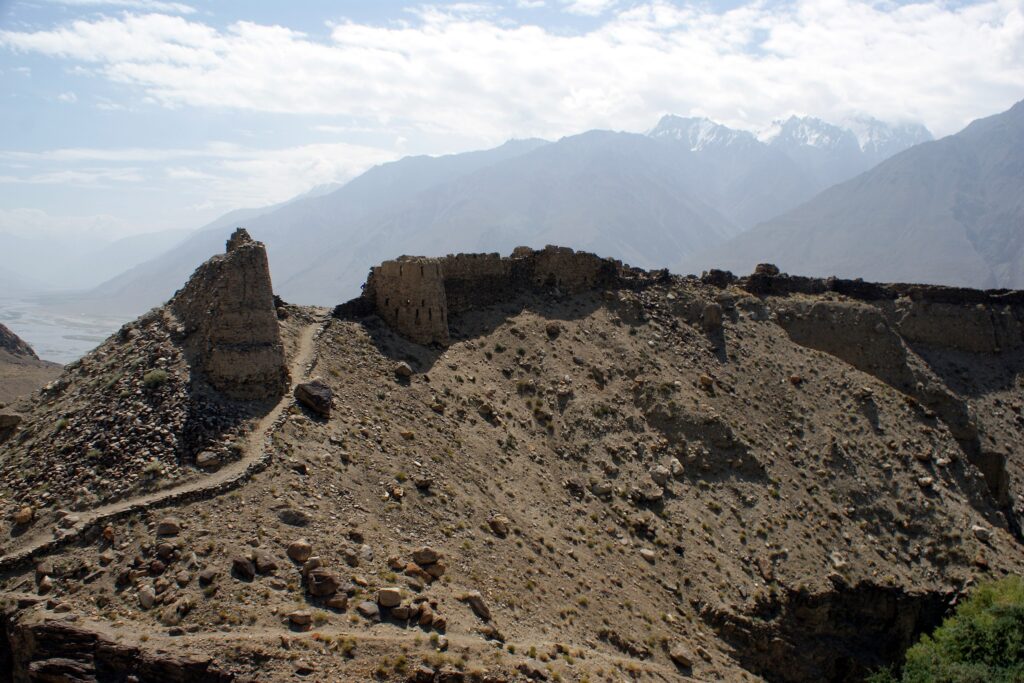
Khujand Fortress & Museum
Located near the Syr Darya River in the heart of Khujand, the reconstructed Khujand Fortress stands on the site of an ancient stronghold that once defended the city along Silk Road routes. While much of the original structure is gone, the current citadel offers a sense of scale and strategic importance – and houses one of the region’s best regional museums.
Inside, the Historical Museum of Sughd presents a well-organized journey through Tajikistan’s past, from pre-Islamic Sogdian culture and medieval Islamic influence to the Soviet period and modern independence. Exhibits include archaeological artifacts, textiles, manuscripts, and engaging visual displays, making it an excellent stop for context before exploring the rest of the country.
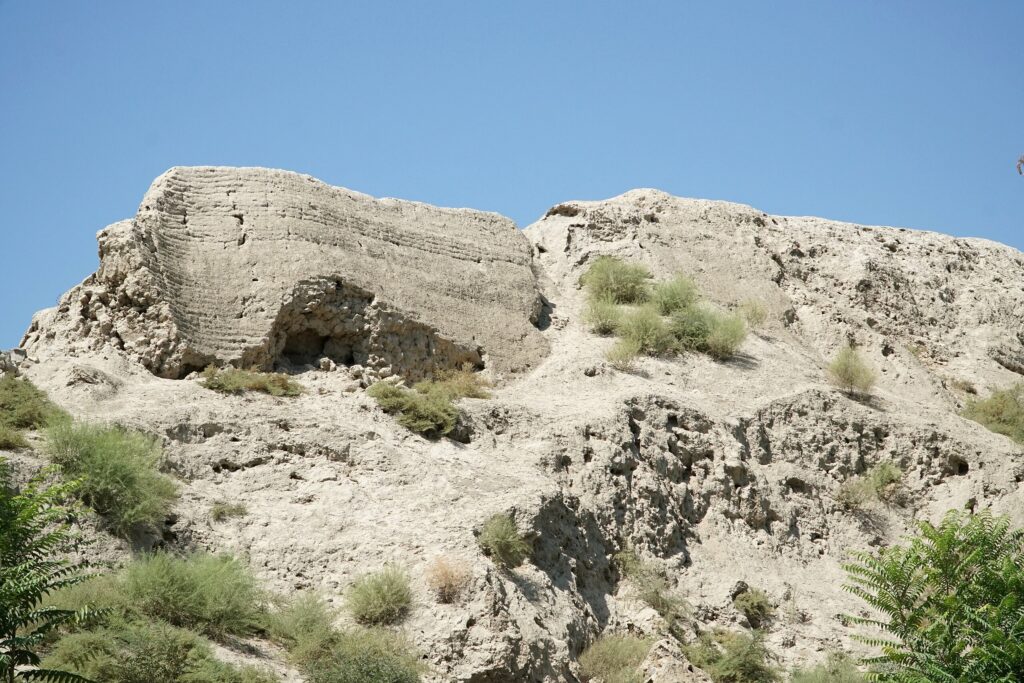
Zoroastrian Sites
Long before the arrival of Islam, parts of what is now Tajikistan were centers of Zoroastrian belief — one of the world’s oldest monotheistic religions. Today, scattered remains of fire temples, sacred stones, and burial mounds can still be found in remote areas of the Pamirs and the Zeravshan Valley, particularly near Panjakent. While many sites are unmarked and poorly preserved, they offer rare insight into the pre-Islamic spiritual landscape of Central Asia.
Most of these sites require local guides or background research to locate and understand. Some visible examples include stone altars, ritual platforms, and burial sites believed to date back over 2,000 years.
Culinary & Cultural Experiences
Dishes to Try
- Qurutob – A national favorite made from tangy yogurt sauce poured over pieces of flatbread and topped with onions, herbs, and sometimes tomatoes. Usually eaten communally.
- Plov (Osh) – A Central Asian staple: rice cooked with lamb or beef, carrots, and cumin. Served at most gatherings and local cafés.
- Lagman – Hand-pulled noodles served either in a spiced broth or stir-fried with vegetables and meat.
- Shurbo – A hearty soup made with lamb or beef, potatoes, carrots, and onions. Comfort food in mountain villages.
Traditional Drinks
- Chai (Tea) – Ubiquitous and symbolic. Black or green, usually served with sweets, nuts, and dried fruit. Always offered to guests.
- Dugh – A salty yogurt drink, similar to ayran. Cooling, hydrating, and often homemade.
Markets & Bazaars
- Green Bazaar (Khujand) – A vibrant market full of dried apricots, walnuts, local cheese, fresh herbs, and colorful textiles.
- Mehrgon Market (Dushanbe) – A modern, clean market that still feels traditional. Great for buying spices, fresh fruit, and handcrafted goods.
Practical Travel Tips
Best Time to Visit
- Summer (June–September): Best for high-altitude trekking, road trips in the Pamirs, and exploring remote valleys.
- Spring (April–May): Green landscapes and wildflowers in lower regions. Good for visiting cultural sites and the Fann Mountains.
- Autumn (September–October): Cooler temperatures, golden foliage, and clear skies – great for photography and lower-elevation hikes.
- Winter (November–March): Cold and snowy, especially in the mountains. Travel is limited, but cities remain accessible.
Visas & Permits
- eVisa: Available online for most travelers and valid for 60 days.
- GBAO Permit: Required for visiting the Pamirs. Can be added during your eVisa application process.
Language
- Tajik (a Persian dialect) is the official language.
- Russian is widely spoken, especially in cities and government offices.
- English is limited outside Dushanbe – learning basic Russian or Tajik phrases is helpful in rural areas.
Currency & Money
- Currency: Tajik Somoni (TJS)
- ATMs: Available in Dushanbe and Khujand, but limited elsewhere.
- Cash: Essential for travel in mountain regions and small villages.
Transportation & Driving Tips
Getting Around
- Shared taxis and marshrutkas: The most common and affordable way to travel between cities and towns.
- Domestic flights: Operate on some routes (e.g. Dushanbe–Khujand, Dushanbe–Khorog), but are often weather-dependent.
- Private tours: Recommended for the Pamir Highway and remote routes, especially if you prefer an English-speaking driver or flexible stops.
Driving in Tajikistan
- Road conditions: Generally good near cities, but rough and unpaved in the Pamirs and Bartang Valley.
- 4WD: Strongly recommended for all travel beyond major highways.
- Fuel access: Limited in remote areas – fill up when you can.
- IDP required: You must have an International Driving Permit to rent or legally drive.
Tajikistan is not for travelers seeking convenience – it’s for those drawn to depth, silence, and raw beauty. With its soaring mountains, ancient cities, and strong traditions, it offers experiences few places still can. Whether you’re trekking to a high-altitude lake, sharing tea in a Pamiri home, or standing among Silk Road ruins, this is a country that rewards those who go the extra mile.

Published July 06, 2025 • 15m to read

